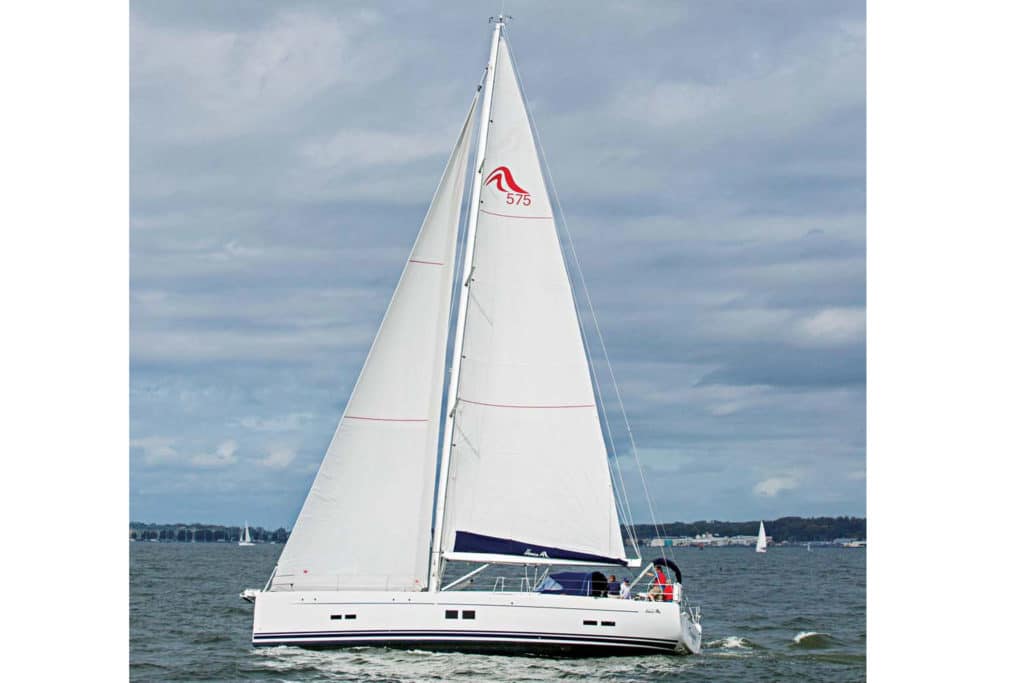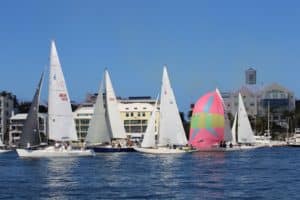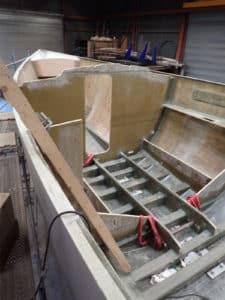One of the best, if sometimes harrowing ways to get a sense of just how massive and voluminous today’s full-size cruisers are is to board one from a rocking inflatable in a rolling seaway. Case in point: approaching the Dufour 560 Grand’ Large for our test sail on a blustery Chesapeake Bay morning in a 20-knot northerly with accompanying 2- to 3-foot seas. Yes, we’d already scrutinized the boat dockside and understood it was a big, powerful yacht. But timing the leap and scrambling up the boarding ladder put the exceptionally high freeboard in its proper perspective. It was like scaling Yosemite’s slab-sided El Capitan. Later, similar adventures boarding the other boats in this category — the Hanse 505 and Hanse 575 — drove the freeboard nail home with authority. These are all Big Boy boats, with all the attendant space, systems, amenities and sailing prowess that come with that rarified territory.
We’ll begin with the smallest boat in the class, the Hanse 505. “This is a company we’ve been following for several years now and they’ve become quite an empire,” said Tim Murphy. “They’re built in a facility in the former East Germany on the Baltic coast, with six different brands, including Moody and Dehler. They do a good job with the Hanses. One thing about the freeboard on both the models we tested: by raising the profile of the entire boat, they’ve eliminated a choppy coach roof that can be difficult to maneuver around, so the decks are clean and flat. These may be large vessels, but they’re much easier to negotiate.”
“They were shooting for a fast cruising boat that’s easy to sail, with good performance, a lot of room down below, something that was open and inviting,” said Mark Schrader, whose comments would also cover many of the attributes of Hanse’s sister ship in the competition, the Hanse 575. “And I think they struck all those notes. The look is modern and angular, lines are led aft under coamings, there are lots of recessed hatches. It’s a really clean design; frankly, I like it. Sitting in the cockpit looking across that wide deck, I felt relaxed and refreshed; it was just uncluttered. And one thing about that freeboard, at anchor you’d board the boat from the wide swim platform that drops down from the transom, and is very well done.”
“One example of Hanse’s craftsmanship and workmanship came when we were looking at some of the labeling on the electrical system,” said Murphy. “It was in alphanumeric codes, so we asked about an owner’s manual, and the company rep showed us this incredible manual which included every single code. You flip the pages and there are maps of the entire boat showing all the different circuits and where they’re run to, and it also includes manuals for all the gear installed on the boat. I think this is something owners will really appreciate when addressing maintenance issues down the road. They deserve kudos for that.”
Interestingly, in terms of the design time line, the 575 preceded the 505; usually, for most builders, it’s often the other way around. “The steering system is very nice,” said Schrader, after steering the 575. “You can see they purchase all the right component parts and install them correctly. This is a very smooth boat to drive.” Yet, after comparing the two boats, in terms of the overall package, the consensus among the judges was that the 505 was the more successful and better executed new Hanse.
That left the Dufour 560 GL, which the judges sailed in sporty weather. The previous day’s sail trials had also been conducted in challenging conditions. “And we came off the water then feeling pretty cranky about how hard it was to move around on some of those boats,” said Murphy. “But this Dufour was a real pleasure, both sailing it and moving around to inspect it. The breeze backed down into the 12 to 15 knot range and we were making a very effortless 8 knots of boat speed. The helm was really nice. It was very pleasurable driving this boat.”
“It got high marks on all points of sail,” agreed Schrader. “There were good handholds; the deck had solid non-skid; the hardware was nice; and everything was arranged functionally and efficiently. On all points of sail, I gave the boat very high marks. I thought it seemed like a very high-end boat to me. I liked it.”
For Ed Sherman, it was the little things that mattered. “One of the things that annoys the heck out of me is when builders use standard, terrestrial-grade cabinet hinges, and you step on a pretty new boat and they’re already rusting. The Dufour utilizes stainless hinges on their cabinets, which is somewhat unique among boats in this general build level. Hats off to Dufour for taking that into account. I commend them for that.”
In a class where all three boats scored highly, it came down to the intangibles when the final votes were tallied, with the Dufour 560 GL eking out a close victory. For some judges, the ultimate call can even hinge on the hinges.
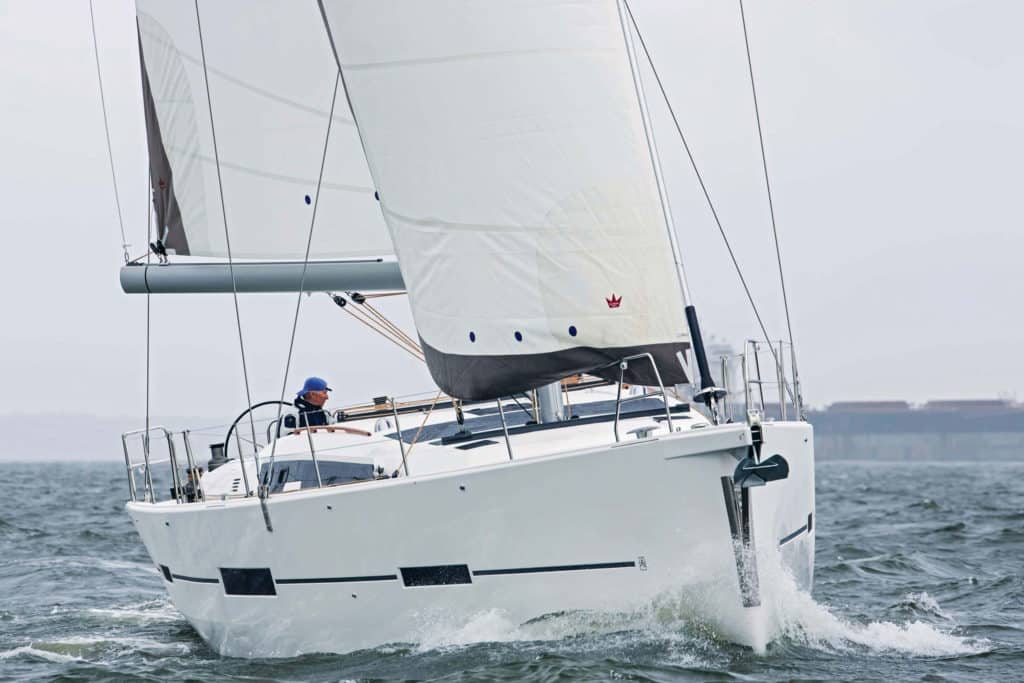
Dufour 56 GL Sailboat
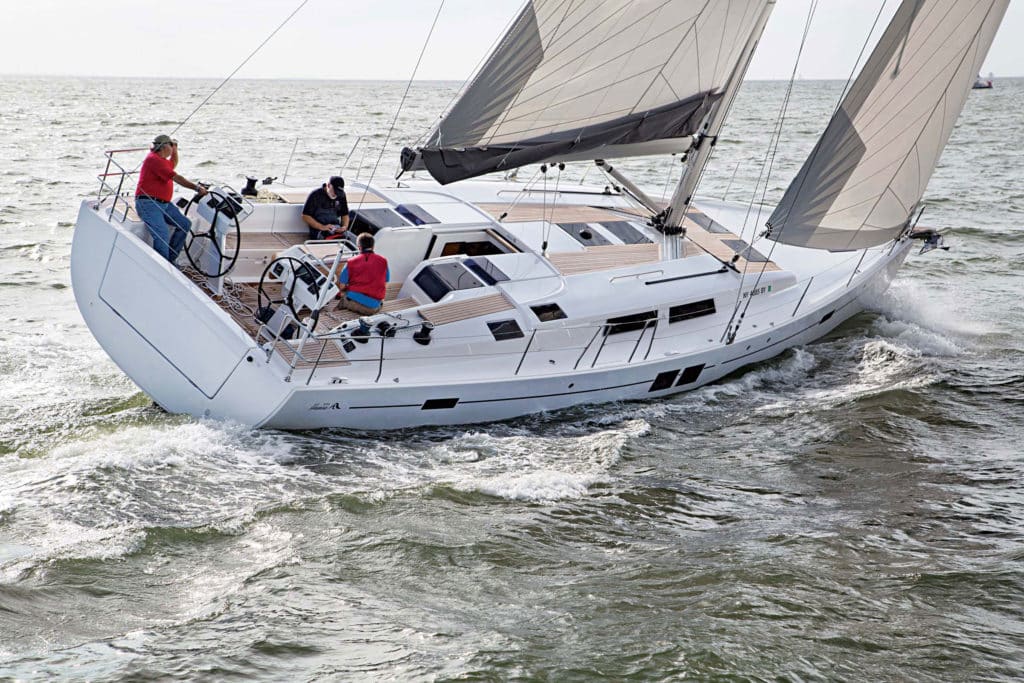
Hanse 505 Sailboat
